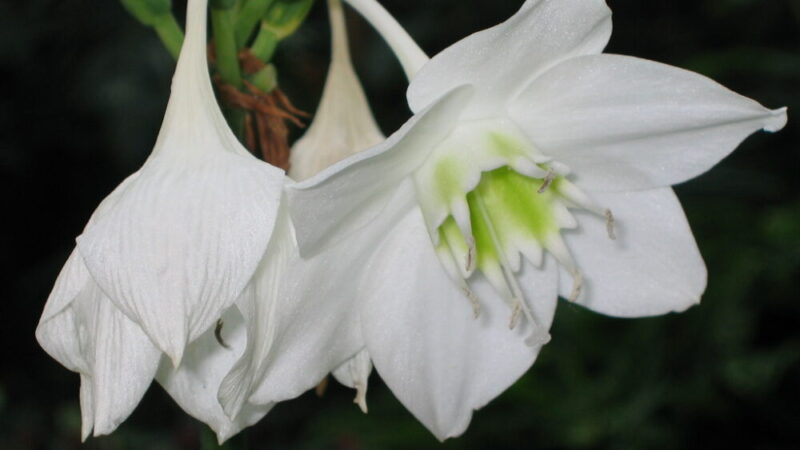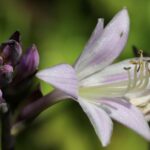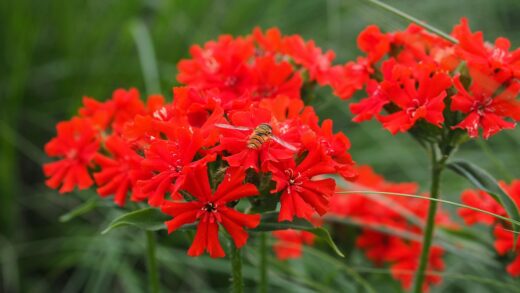Light requirements of the Amazon lily

Providing the correct quality and intensity of light is a cornerstone of successful Amazon lily cultivation, as it directly fuels the plant’s ability to create energy for its lush foliage and spectacular flowers. This plant’s lighting needs are a direct inheritance from its natural habitat on the floor of dense tropical rainforests. There, it is shielded by a multi-layered canopy of trees, receiving sunlight that is filtered and dappled, never direct or harsh. Replicating these conditions of bright, indirect light within the home is the primary goal for any grower. Understanding how to interpret your home’s natural light and how to read the plant’s own signals is key to finding the perfect location where it will not just survive, but truly flourish.
The term “bright, indirect light” can be subjective, but it generally refers to a location that is well-lit for a significant portion of the day but does not receive the full, direct force of the sun’s rays. An ideal spot is often near an east-facing window, which receives the gentle, less intense morning sun. A position a few feet back from a south or west-facing window is also excellent, as the distance is enough to diffuse the potentially scorching afternoon sun. Placing the plant behind a sheer curtain is another effective way to filter the light from a brighter window, providing the perfect luminous environment it craves.
It is crucial to understand that direct sunlight, especially during the peak hours of the afternoon, is the enemy of the Amazon lily. The plant’s large, dark green leaves are not adapted to handle such intensity. Exposure to direct sun will quickly lead to unsightly scorched patches, which appear as dry, brown, or bleached areas on the foliage. This not only damages the plant’s appearance but also causes significant stress, hindering its overall health and ability to photosynthesize efficiently. Constant vigilance is needed, especially as the seasons change and the angle of the sun shifts, potentially bringing direct rays into a previously safe spot.
Conversely, while it is adapted to lower light levels than many houseplants, the Amazon lily will not thrive in a dark corner. Insufficient light is one of the most common reasons for a healthy-looking plant to fail to produce flowers. If the plant is in a location that is too dim, its growth may become weak and “leggy” as it stretches towards the light source, and it will lack the energy needed to form flower stalks. Finding that perfect balance—bright enough to power photosynthesis and flowering, but gentle enough to prevent burning—is the essential task that will unlock the full beauty of this exceptional plant.
Decoding ‘bright, indirect light’
The phrase ‘bright, indirect light’ is perhaps the most common recommendation in houseplant care, yet it can be one of the most confusing to interpret accurately. For the Amazon lily, this means finding a spot in a room that is brightly illuminated for at least six to eight hours a day, but where the sun’s rays do not fall directly onto the plant’s leaves. An easy way to test this is the hand test: place your hand between the light source and the plant. If it casts a soft, blurry shadow, the light is likely indirect and suitable. If it casts a sharp, well-defined shadow, the light is direct and too intense.
More articles on this topic
The orientation of your windows plays the most significant role in determining the quality of light in your home. An east-facing window is often considered the perfect placement for an Amazon lily. It provides several hours of gentle, direct morning sun that is not strong enough to cause damage, followed by bright, indirect light for the rest of the day. A north-facing window offers the most consistent, gentle indirect light all day long, but in some regions, it may not be bright enough to encourage prolific flowering, so the plant would need to be placed very close to the glass.
South and west-facing windows provide the most intense and potentially damaging light, especially in the afternoon. However, this does not mean they are unusable. These locations can be made ideal by simply increasing the distance between the window and the plant. Placing your Amazon lily several feet back from a south or west-facing window, or positioning it to the side of the window opening, can provide the necessary brightness without the risk of scorch. Alternatively, using a sheer curtain to act as a diffuser is an excellent and simple way to modify this intense light into the perfect filtered environment the plant loves.
It is also important to consider the context outside your windows. A south-facing window that is shaded by a large tree or a neighbouring building may provide perfect, all-day filtered light. Conversely, an east-facing window with no obstructions will offer more direct morning light than one with an overhang. Take the time to observe how the light moves through your rooms at different times of the day. This understanding of your home’s unique light signature will empower you to choose the absolute best location for your Amazon lily to thrive.
Signs of incorrect lighting
Your Amazon lily is excellent at communicating its needs, and its leaves are the primary billboards for its messages about lighting. Learning to read these signals allows you to make timely adjustments and prevent long-term damage. One of the most obvious signs of excessive light is leaf scorch. This presents as yellow, white, or brown dry patches on the leaves, often in the areas most directly exposed to the sun. This is cellular damage from which the leaf cannot recover, and it is a clear and urgent signal to move the plant to a shadier location immediately.
More articles on this topic
Another, more subtle sign of too much light is a general paling or yellowing of the foliage. While the deep, glossy green of the leaves is a sign of health, a plant receiving overly bright light may start to look washed-out or yellowish-green. This happens because the high light intensity can cause the chlorophyll in the leaves to break down faster than the plant can produce it. If you notice the vibrant colour of your plant beginning to fade, it is a good indication that you should move it to a spot with slightly less intense illumination.
On the other end of the spectrum, insufficient light also produces clear symptoms. The most significant of these is a failure to bloom. An Amazon lily can maintain its foliage in relatively low light, but it requires a certain threshold of light energy to initiate the demanding process of flowering. If your plant is otherwise healthy, has lush green leaves, but consistently refuses to produce flower stalks, inadequate light is the most likely culprit. Moving it to a brighter location is often all that is needed to trigger a bloom cycle.
Other signs of low light include weak, leggy growth, known as etiolation. The plant’s leaves may have unusually long stems as they stretch desperately towards the nearest light source. The leaves themselves may also be smaller than average. In very low light conditions, the plant may also begin to shed its lower leaves as it can no longer support a large amount of foliage with the limited energy it is producing. Observing these signs and responding by moving the plant to a brighter spot will quickly improve its vigour and overall health.
Adapting to seasonal light changes
The quantity and quality of natural light entering your home change dramatically with the seasons, and your Amazon lily’s placement may need to be adjusted accordingly. During the spring and summer, the sun is higher in the sky and the daylight hours are long. A location that provided perfect indirect light in the winter might suddenly be in the path of intense, direct afternoon sun during the summer. It is important to be observant during this seasonal shift and be prepared to move your plant further away from the window or provide some shading with a curtain to prevent leaf scorch.
Conversely, the winter months bring shorter days and a lower sun angle, significantly reducing the amount of light available indoors. The spot that was ideal in the summer might become too dim to support the plant’s health, even during its dormancy. To compensate for this, you may need to move your Amazon lily closer to its window or to a different window altogether, such as a south-facing one that receives more light during the winter. The goal is to maximize the amount of bright, indirect light it receives during the limited daylight hours.
Rotating your plant regularly is a good practice year-round, but it is especially beneficial during the winter. Turning the pot a quarter turn every week or so ensures that all sides of the plant receive some light. This promotes even, symmetrical growth and prevents the plant from leaning heavily in one direction towards the window. This simple action helps maintain the plant’s attractive shape and ensures all its leaves are contributing to photosynthesis.
For growers in regions with very dark, gloomy winters, natural light may simply not be sufficient to keep the Amazon lily happy. In such cases, supplementing with artificial light can be a game-changer. A simple full-spectrum LED or fluorescent grow light positioned above the plant and run for 10-12 hours a day can provide the consistent, high-quality light it needs to get through the darkest months in excellent health. This can be particularly useful for preventing leaf drop and ensuring the plant has enough stored energy to thrive when spring arrives.
📷: Flickr / Szerző: 阿橋花譜 HQ Flower Guide / Licence: CC BY-SA 2.0

















